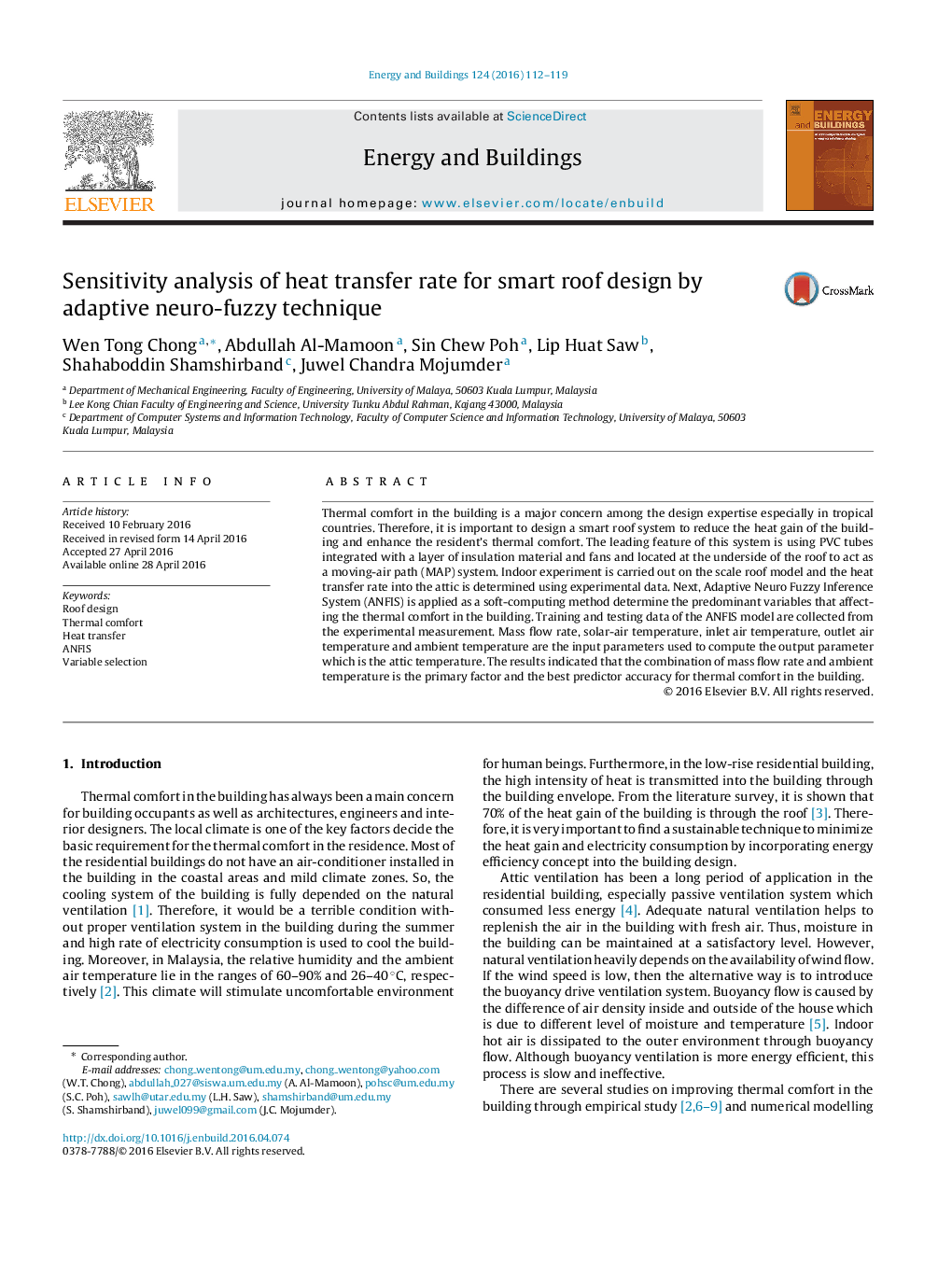| Article ID | Journal | Published Year | Pages | File Type |
|---|---|---|---|---|
| 262093 | Energy and Buildings | 2016 | 8 Pages |
•A new smart roof system is designed to enhance thermal comfort in the building.•Soft-computing method (ANFIS) is used for thermal sensitivity analysis.•Thermal response of the attic temperature by varying air flow rate is studied.•Moving-air path system enhances the heat transfer mechanism.•Mass flow rate of cooling air plays a vital role in the attic temperature reduction.
Thermal comfort in the building is a major concern among the design expertise especially in tropical countries. Therefore, it is important to design a smart roof system to reduce the heat gain of the building and enhance the resident's thermal comfort. The leading feature of this system is using PVC tubes integrated with a layer of insulation material and fans and located at the underside of the roof to act as a moving-air path (MAP) system. Indoor experiment is carried out on the scale roof model and the heat transfer rate into the attic is determined using experimental data. Next, Adaptive Neuro Fuzzy Inference System (ANFIS) is applied as a soft-computing method determine the predominant variables that affecting the thermal comfort in the building. Training and testing data of the ANFIS model are collected from the experimental measurement. Mass flow rate, solar-air temperature, inlet air temperature, outlet air temperature and ambient temperature are the input parameters used to compute the output parameter which is the attic temperature. The results indicated that the combination of mass flow rate and ambient temperature is the primary factor and the best predictor accuracy for thermal comfort in the building.
Graphical abstractFigure optionsDownload full-size imageDownload as PowerPoint slide
